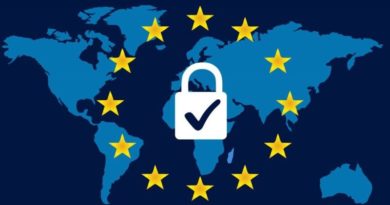
Fostering greater connectivity across Europe
In her State of the European Union address last month, President von der Leyen has made clear: “We must make this Europe’s
Digital Decade”. This was very clear in the Commissions political guidelines: to create a “Europe ready for the digital age”. Calls to push forward with digital development, however, have a longer history. The Juncker Commission started their term in 2014 with a promise to harness the digital transformation to kick start the European economy following the financial crisis, and to create a Digital Single Market. A lot happened in those 5 years, but what are the challenges now in 2020, and where should our focus lie?
I argue that the fundamental building block of the digital transformation should be connectivity. We need good connectivity brought to every corner of the EU to help us overcome the economic, territorial and social divides within the EU that threaten to grow because of the covid-19 pandemic. The EU can counter this dividing trend with next-generation innovations around 5G and high-performance networks.
An important element to improve connectivity for the benefit of businesses and citizens is not just to connect them to the internet, but also to provide a better and faster internet coverage.
We are already advanced in this goal. The share of EU-27 households with internet access was 90% in 2019, compared to 64% in 2009 (Eurostat). The primary objective at this stage should be to develop the internet available to citizens, in parallel with the objective of increasing internet access to 100%. Giving European households access to 100 Mbps connections by 2025 would be a step towards enhanced connectivity.
Everyone will benefit from high-speed internet, be it the businesses or the consumers. Sooner rather than later, high-speed
internet will become a necessity because of the transformation of the EU labor market, where Covid has acted as a catalyst to accelerate more jobs online. New professions will exist and a new set of skills will be required. The current connection is sufficient for leisure use, such as streaming movies, but throughout the lockdown period, it has become clear that by working or studying from home, the limits of the internet connection are very quickly reached. If this is already the case now, what will happen when jobs become even more digitalized?
Today, each house should have at least 50 Mbps connection for individuals and companies to remain productive. This is simply not the case though, so something needs to change. People should not have to decide between work or their children attending online classes in 2020 Europe.
The latest action for a digital Europe was taken last month, when the Commission published a Connectivity Recommendation, calling on Member States to work together to develop procedures and accelerate the deployment of 5G and fiber networks. The EU should agree on common measures so that network deployment costs will be reduced and the 5G coverage can be improved. Cross- border cooperation will be relevant not only for efficient deployment but also for the common security of the 5G infrastructure. Wide 5G coverage in urban areas has big economic potential seeing as three out of four EU citizens live in urban areas, which account for 85% of the Union’s GDP. But it is also the key to ensure that our rural populations can take part in future economic growth online.
Without a doubt the EU’s economy is stronger today than it would be during a pandemic without the technology we have. But the Commission, Council and the Parliament will have to do more to ensure the “digital decade” becomes reality. To achieve this, the EU will have to gain ground compared to the world’s leading digital leaders, such as the US, to remain competitive. By 2025, half of all US households will have access to 5G network technology, but only every third household will have access in the EU1. This is not acceptable. To reduce this gap, member states must work together to address discrepancies in connectivity. The EU has shown the political will to foster greater connectivity – now political action has to follow.




